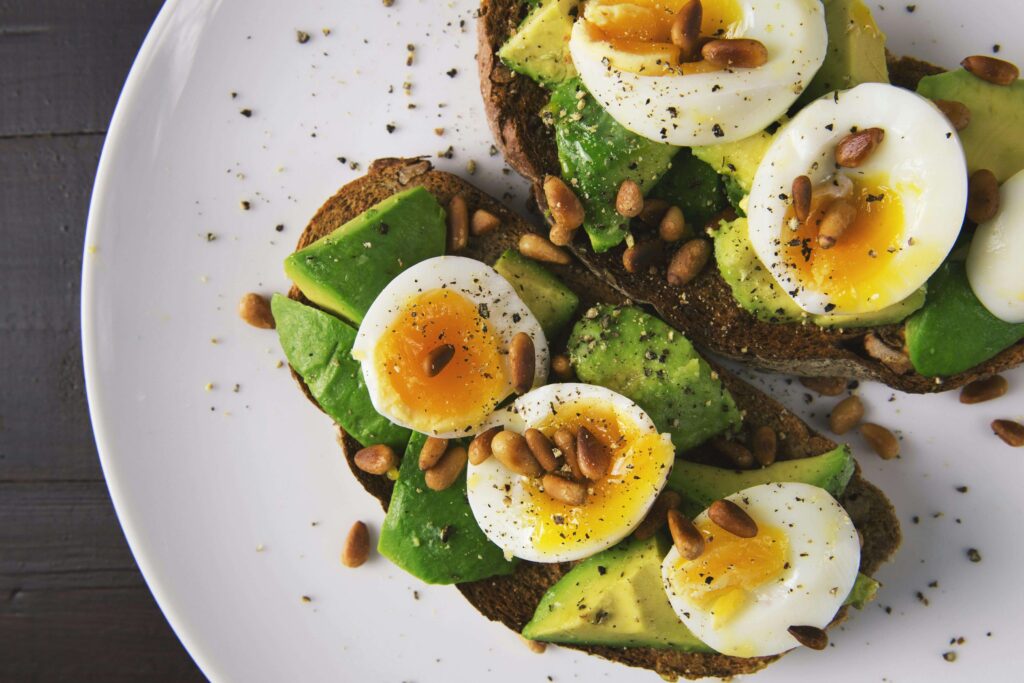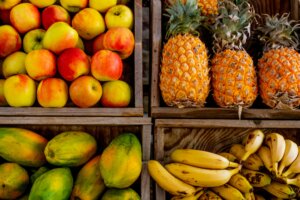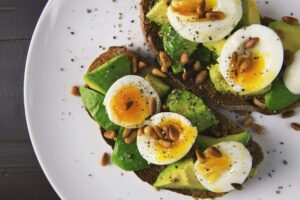The term “clean eating” is thrown around a lot. But what does it really mean, and how can it fit into your low tox living goals?
Clean eating isn’t about following a strict set of rules, but rather about making mindful, intentional choices that nourish your body with real, whole foods.
This comprehensive guide will help you understand the basics of clean eating, from how to choose foods that support your health to actionable tips on creating balanced, toxin-free meals that make you feel amazing.
What is clean eating?
At its core, clean eating is about consuming foods that are as close to their natural state as possible. This means choosing whole, unprocessed foods that are free from additives, preservatives, and artificial ingredients.
Clean eating is not about restriction, dieting, or deprivation—it’s about nourishing your body with foods that fuel your energy and support your well-being.
The basics of clean eating can be broken down into a five key principles:
- Focus on whole foods
- Limit processed and refined ingredients
- Choose organic when possible
- Prioritize variety and balance in your diet
- Hydrate with clean, toxin-free beverages
These principles provide the foundation for a clean eating lifestyle that promotes health, reduces your exposure to toxins, and helps you feel your best every day. We’ll dive into each of these in detail below.
Why clean eating matters for a low tox lifestyle
When you’re committed to a low tox lifestyle, what you put in your body is just as important as the products you use in your home or on your skin. Many processed foods are loaded with artificial ingredients, preservatives, pesticides, and other chemicals that can disrupt your body’s natural functions and increase your toxic load.
By embracing the basics of clean eating, you’re choosing foods that are less likely to contribute to inflammation, hormone imbalances, and other health issues. Instead, clean eating focuses on nutrient-dense options that nourish your body and support its natural detoxification processes.
A clean, wholesome diet supports your overall goal of reducing toxic exposure, making it a perfect complement to your low tox living journey.
1. Fill your plate with whole foods
A cornerstone of clean eating is to focus on whole, unprocessed foods. These are foods that come directly from nature and haven’t been altered with additives or preservatives. Think:
- Fresh fruits and vegetables
- Whole grains like brown rice and quinoa
- Nuts and seeds
- High-quality, lean proteins such as organic chicken, grass-fed beef, or wild-caught fish
- Legumes like beans, lentils, and chickpeas
How to get started
Begin by adding more of these foods to your daily meals. If you’re new to clean eating, it doesn’t have to be an all-or-nothing approach. Try swapping out processed snacks for fresh fruit, or replace sugary breakfast cereals with greek yogurt topped with berries and nuts. The goal is to make whole foods the star of your plate.
Pro tip: When shopping, stick to the perimeter of the grocery store where fresh produce, meats, and dairy are typically located. The center aisles tend to be stocked with more processed and packaged foods.
2. Avoid processed and refined foods
Processed foods are often packed with unhealthy ingredients such as refined sugars, artificial colors, preservatives, and unhealthy fats. These additives can cause inflammation, disrupt your body’s hormone balance, and increase your toxic load over time. A key part of clean eating is to limit your consumption of these foods.
Some common processed foods to avoid or limit include:
- Packaged snacks (chips, crackers, cookies)
- Sugary cereals and breakfast bars
- Processed meats (hot dogs, deli meats, sausage)
- Frozen meals with long ingredient lists
- Sugary drinks (sodas, energy drinks)
Get to know your food labels
Understanding what’s in your food is a vital part of clean eating. Food labels can be confusing, but once you know what to look for, it’s easier to make healthier choices. In general, aim for foods with short, simple ingredient lists that contain items you recognize. Avoid artificial ingredients, added sugars, and hydrogenated oils.
How to get started
Take some time to review the labels of the foods you typically buy. If you see ingredients you don’t recognize or can’t pronounce, it’s a good sign that the item is processed. Start replacing these products with simpler, cleaner options.
If you’re used to grabbing chips with your lunch, try replacing them with raw veggies and hummus. For dessert, swap out processed cookies for a piece of dark chocolate or a homemade energy bite.
Remember, it’s not about deprivation. It’s about choosing healthier, whole-food alternatives that are just as satisfying (and much more satiating).
3. Prioritize organic and local foods
Whenever possible, opt for organic and locally grown foods. Organic foods are grown without synthetic pesticides or fertilizers, which helps reduce your exposure to harmful chemicals.
While it’s not always feasible to buy 100% organic, focusing on key items like the Dirty Dozen (a list of fruits and vegetables that tend to have the highest pesticide levels) can make a big impact.
How to get started
Check out your local farmers’ market for fresh, in-season produce. You’ll not only be supporting your local community, but you’ll also get access to foods that are often grown with fewer chemicals than mass-produced supermarket items. If buying all organic is too costly, start with one or two high-priority items like berries or leafy greens.
4. Incorporate balance and variety
Clean eating isn’t about cutting out entire food groups or following rigid rules. It’s about creating balance in your diet and enjoying a wide variety of nutrient-dense foods. A balanced, clean eating plan includes a mix of macronutrients (proteins, carbohydrates, and fats) and micronutrients (vitamins and minerals).
How to get started
Create meals that incorporate different food groups. For example, a balanced dinner might include grilled salmon (protein), quinoa (whole grain), and roasted vegetables (fiber, vitamins, minerals).
Don’t be afraid to experiment with new ingredients or try out recipes featuring foods you haven’t had before. Variety is key to keeping things interesting and ensuring your body gets all the nutrients it needs.
5. Stay hydrated with clean beverages
What you drink is just as important as what you eat. Clean eating also means being mindful of the beverages you consume. Water should be your go-to, but you can also enjoy herbal teas, infused water with fruits or herbs, and occasional fresh-pressed juices.
Try to avoid sugary sodas, energy drinks, and processed juices that contain artificial flavors and high amounts of sugar.
How to get started
If you’re used to drinking soda or other sugary beverages, start by replacing one drink per day with water or herbal tea. Gradually increase your water intake until it becomes your primary beverage. You’ll notice an improvement in your energy levels and overall well-being as you hydrate with clean, toxin-free options.
Bonus principal: Plan ahead for success
One of the best ways to stick with clean eating is to plan ahead, or meal prep. When you have healthy meals and snacks ready to go, you’re less likely to reach for processed convenience foods.
How to get started
Set aside time each week to plan your meals and snacks. This might involve preparing ingredients in advance, batch cooking, or simply having a plan for what you’ll eat each day. Keep healthy snacks like nuts, fresh fruit, or veggie sticks on hand for when hunger strikes.
Start your clean eating journey today
Clean eating is not about being perfect—it’s about making better choices most of the time. Life happens, and it’s okay to enjoy the occasional indulgence without guilt.
The key is to make clean eating a sustainable part of your lifestyle, not a rigid set of rules that you have to follow 100% of the time. Allow yourself some flexibility. If you’re at a social event or restaurant, choose the healthiest option available, but don’t stress if it’s not perfect.
The more you practice clean eating, the easier it will become, and over time, you’ll naturally gravitate toward the foods that make you feel your best.







